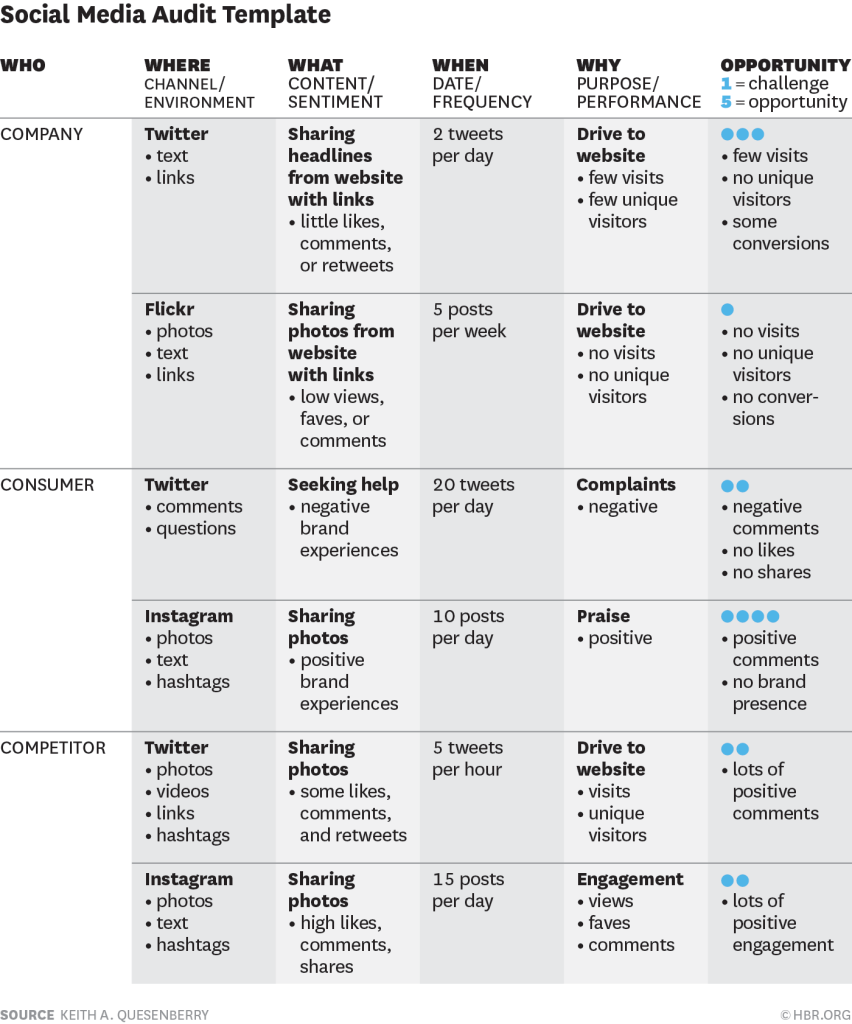Consumers are now generating over a quarter of content that affects the way brands present themselves in search engines. Those same consumers tend to that content more any promotional materials that brands generate themselves. No need to explain how important these messages are in forming firm’s perceived value.
With the amount of available social media channels, how can digital marketers keep track of what people are saying? And what strategies can be implemented to engage those consumers to influence the conversation? That’s where a careful social media audit can help. Audit is a systematic examination of social data to help marketers discover, categorize, and evaluate all the social talk about a brand. This approach captures what consumers are saying about a brand, what competitors are doing on social media, and what the brand itself is doing.
Keith A. Quesenberry, of Harvard Business Review developed a social media audit template for the book Social Media Strategy: Marketing and Advertising in the Consumer Revolution from the principle of the Five Ws that is taught to journalists: who, where, what, when, and why:
Who categorizes data according to who is talking, whether that is the company, consumers, or a competitor.
Where lists content by social media channel and environment. Channels include outlets like YouTube, Facebook, or Pinterest, while environment refers to the look and feel.
What lists the type of content, such as article, photo, or video, plus the sentiment of the post as positive, negative, or neutral.
When quantifies the frequency of activity, like number of posts, comments, views, or shares, per day, week, or month.
Why determines the purpose of the message from awareness and promotion to complaint or praise. If applicable, key performance indicators (KPIs) are included.
Finally, each observation is scored as either a problem or an opportunity to help determine appropriate marketing action in the social strategy.
Conducting a social media audit following this template helps compel companies to figure out each channel’s purpose and key performance indicators. For example, “why does the organization have a Pinterest page and how is success being measured?” Simply because the competitor has a page is not a sound strategic reason.
It also helps marketers to see their brands from the consumer’s perspective and ideally helps marketers shift their mindsets from control to engagement.
Read more in


